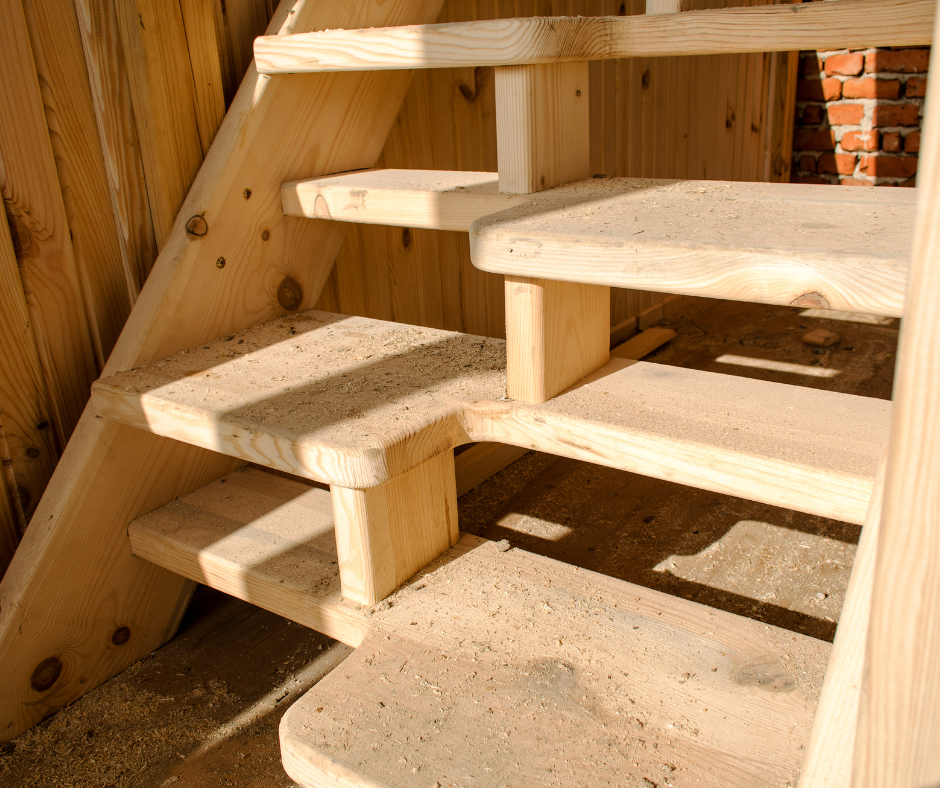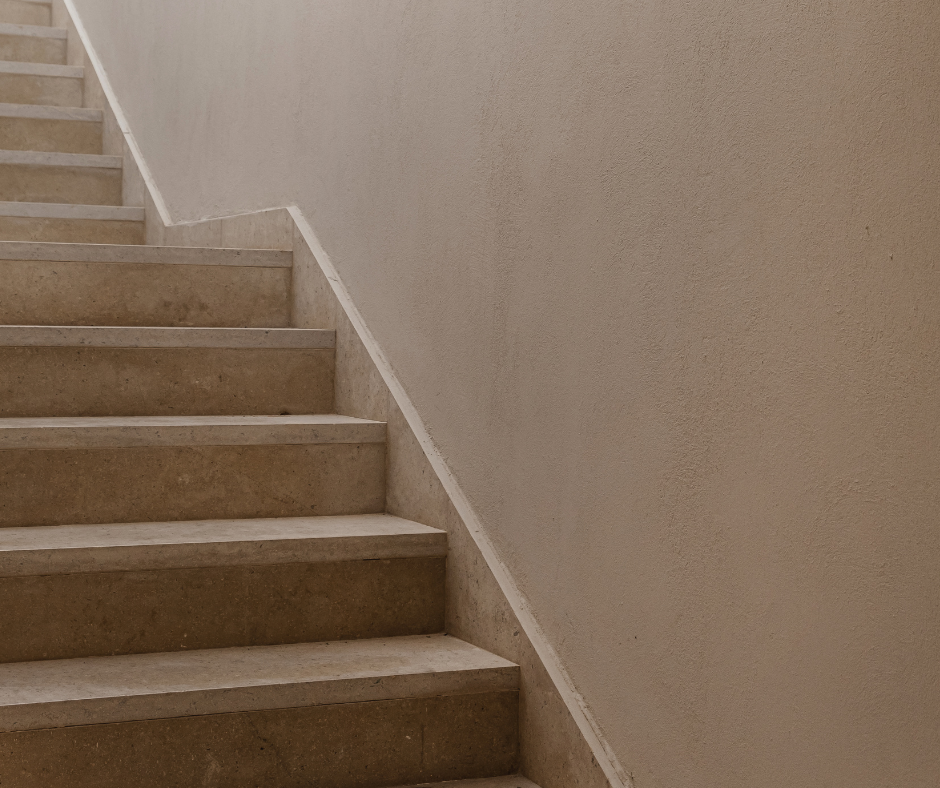A well-designed basement staircase is essential for both safety and functionality.
Basement stair tread depth should be at least 10 inches to provide stable footing and prevent accidents.
This ensures a comfortable step while meeting standard building codes for safe stair usage.
Understanding the right depth is just one part of creating a secure staircase.
The right materials, such as carpet stair treads, can further enhance safety by providing extra grip and reducing noise.
In this guide, you’ll learn how to choose the best depth, materials, and cost-effective solutions for a safer and more stylish basement staircase.
Are Basement Stair Treads the Same as the Rest of the House?
In most cases, basement stair treads match the dimensions of the main stairs.
However, older homes or space limitations may require slight variations while still prioritizing safety.
Standard Sizing for Stair Treads
In most cases, basement stair treads follow the same size recommendations as the rest of your home.
The standard stair tread depth is at least 10 inches, while risers should not be higher than 7.75 inches.
These measurements help ensure safe and comfortable use for all household members.
If you are wondering, what is a standard stair tread depth, it is typically at least 10 inches deep.
This depth allows for a stable footing while descending or ascending the stairs.
Any less than this, and you risk making the stairs uncomfortable or even unsafe to use.
Variations in Basement Stairs
Unlike main staircases in a home, basement stairs sometimes have constraints that limit their size.
Older homes may have basement stairs that are narrower, steeper, or shorter than the current standard due to space limitations.
However, even in these cases, it is crucial to get as close as possible to standard dimensions to maintain safety.
If your basement stairs feel too steep or uncomfortable, consider ways to adjust the treads and risers to improve safety.
Adding stair tread extensions or replacing the stairs altogether with properly sized ones may be necessary for long-term usability.
What Are the Specs for Basement Stairs?
Basement stairs should follow standard size guidelines to ensure safety and comfort.
Tread depth, riser height, and stair width all play a role in creating a stable and accessible staircase.
Building Code Requirements
Building codes exist to ensure that stairs are safe and functional.
While specific codes vary by location, the general guidelines for basement stair dimensions include:
-
Tread Depth: At least 10 inches
-
Riser Height: No more than 7.75 inches
-
Stair Width: At least 36 inches
-
Headroom: At least 6 feet 8 inches
Following these guidelines helps ensure that your stairs are comfortable and meet safety requirements.
If you are working on a basement remodel, always check local building codes before making any modifications.
Additional Considerations
Besides size, other factors contribute to basement stair safety.
The type of material you choose, the level of traction on the steps, and the lighting in the stairwell all play a role in creating a safe environment.
For instance, a poorly lit basement staircase can increase the risk of falls.
Installing bright overhead lighting or motion-activated lights along the staircase can improve visibility and reduce hazards.
How Should I Finish My Basement Stairs?
Choosing the right finish for your basement stairs improves both safety and appearance.
Materials like wood, carpet, and vinyl each offer unique benefits depending on your needs.
Choosing the Right Material
The right material for basement stair treads affects both appearance and safety.
Some of the most popular choices include:
-
Wood: A classic option that adds warmth and durability. However, untreated wood can become slippery, so consider adding non-slip coatings or stair treads.
-
Carpet: A comfortable, quiet, and affordable choice. Carpet stair treads are particularly useful because they provide additional traction and are easy to install.
-
Vinyl: A budget-friendly and water-resistant option that works well in basements prone to moisture.
Installation Tips
Regardless of the material, proper installation is key.
Poorly secured treads can become hazardous.
Always ensure that stair coverings are securely fastened and that any adhesives or screws are properly applied.
Adding non-slip stair nosing or textured grip strips can enhance safety, especially in homes with children, elderly family members, or pets.
Enhancing Aesthetics
If aesthetics are a concern, there are plenty of ways to make basement stairs look stylish while keeping them functional.
Staining or painting wood stairs, choosing patterned carpet treads, or adding decorative trim can elevate the look of your basement staircase.
What is the Cheapest Way to Finish Basement Stairs?
Finishing basement stairs doesn’t have to be expensive.
Budget-friendly options like slip-resistant paint, DIY carpet treads, and vinyl planks can give your stairs a fresh look without high costs.
Budget-Friendly Options
Not every basement renovation has to be expensive.
If you’re looking for affordable ways to finish your basement stairs, consider:
-
Paint: Slip-resistant paint is an inexpensive way to refresh your stairs while improving safety.
-
DIY Carpet Treads: Buying and installing carpet stair treads yourself can save money while adding comfort and style.
-
Vinyl Planks: These are easy to install, resistant to moisture, and more affordable than hardwood or tile.
Tips for Cost-Effective Finishing
To stay within budget, look for materials on sale, repurpose leftover flooring from other projects, or check for clearance items at home improvement stores.
Carpet Stair Treads: A Smart Choice
arpet stair treads provide extra grip, reducing the risk of slips and falls.
They are also an affordable way to add comfort and style to your basement stairs.
Benefits of Carpet Stair Treads
Carpet stair treads are one of the best ways to enhance the safety and appearance of basement stairs.
They provide:
-
Extra grip to reduce slips and falls.
-
Comfort underfoot, which is particularly beneficial in colder basement environments.
-
Noise reduction, making your home quieter by muffling footsteps.
Easy Installation and Maintenance
Carpet stair treads are easy to install using double-sided tape or adhesive pads.
Unlike wall-to-wall carpeting, they can be replaced individually if they wear out over time, making maintenance simple and cost-effective.
How to Improve Basement Stair Safety Further
Basement stairs can be a common hazard if not properly designed and maintained.
Simple upgrades like better lighting, sturdy railings, and non-slip materials can make a big difference.
Adding Handrails and Railings
A sturdy handrail is a must for any basement staircase.
Railings provide additional support, helping people maintain balance as they go up and down.
If your basement stairs lack a proper handrail, consider installing one that meets standard height and strength requirements.
Improving Lighting
Poor lighting is a common safety issue in basement stairwells.
A single overhead bulb may not provide enough illumination, so consider adding wall sconces, LED strip lights, or motion-activated lights for better visibility.
Keeping Stairs Clear of Obstacles
A cluttered staircase is a hazard.
Avoid leaving objects like shoes, storage boxes, or laundry baskets on the steps.
A clean and clear staircase is a safe one.
Stepping It Up
Getting the right basement stair tread depth is crucial for creating a safe and comfortable staircase.
Following standard guidelines ensures stability and ease of use, while proper materials and finishes enhance both safety and aesthetics.
If you're wondering, what is a standard stair tread depth, it is at least 10 inches deep, ensuring adequate foot placement.
Choosing materials like wood, vinyl, or carpet stair treads can enhance traction and style.
For those on a budget, affordable options like slip-resistant paint, DIY carpet treads, and vinyl planks can provide an attractive and functional solution without breaking the bank.
By incorporating safety features such as handrails, proper lighting, and non-slip materials, you can create a secure basement staircase that meets both your practical and aesthetic needs.
Carpet stair treads, in particular, stand out as an excellent option, offering safety, comfort, and easy installation.
Whether upgrading an existing staircase or building new stairs, investing in the right basement stair tread depth ensures a home that is both beautiful and safe for years to come.
Contact Oak Valley Designs
For high-quality, custom stair treads tailored to alternating tread stairs, Oak Valley Designs provides expert solutions designed for both indoor and outdoor applications.
-
Website: https://oakvalleydesigns.com/
-
Phone: 706.331.0315
-
Email: info@oakvalleydesigns.com
-
Address: 30 River Ct SW Bldg E Cartersville, Ga 30120




